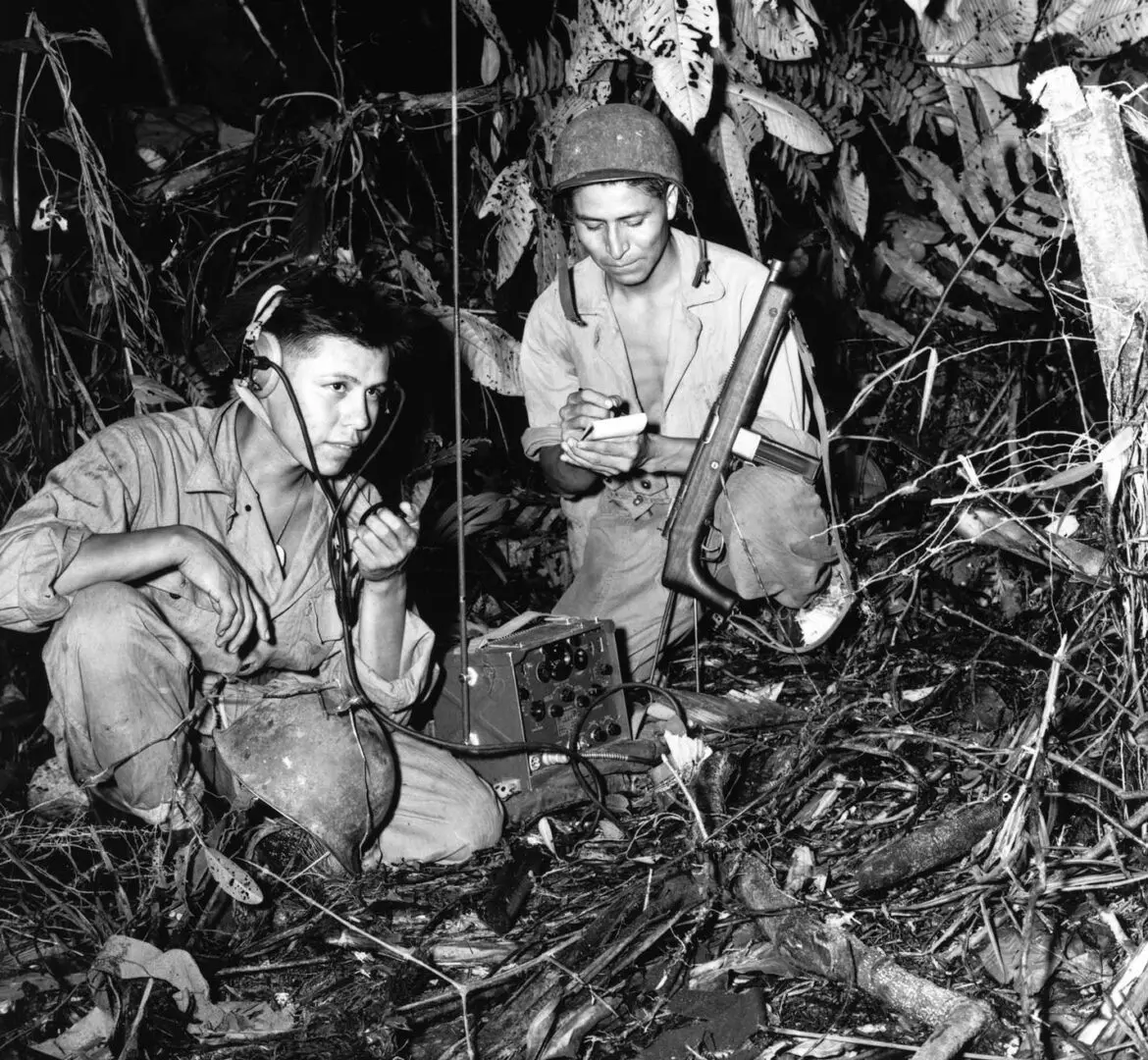Navajo Code Talkers: The Allies’ Secret Weapon in World War II
By MS. BETTY NYLUND BARR, STAFF WRITER
Have you ever come up with a truly brilliant idea that changed the course of history? Well, kudos to you if you have because people who can state that honestly are rare. Philip Johnston was just such a person. His idea had an impact on the military, the United States, and, in fact, the entire world. Philip Johnston’s idea likely helped the Allies win World War II.
Philip’s parents were missionaries serving on the Navajo Reservation (now called the Navajo Nation), and he grew up learning and loving the language and ways of the Navajo people. At the age of 5, he was already translating the language for his parents, and at the ripe old age of 9, he traveled to Washington, D.C., as a translator with a Navajo delegation who were lobbying for Indian rights.1
While serving in the military during World War I, Johnston learned that American Indians—mostly Choctaw—were serving as “code talkers†for the military. They developed a code by substituting words in their language for words the military used to communicate about enemy operations. Although the Choctaw code was successful, it was eventually broken and of no further use after the war.
In World War II, strategists had to come up with another plan. “In the early part of World War II, the enemy was breaking every military code that was being used in the Pacific,†said Peter MacDonald, Navajo Code Talker and president of the Navajo Code Talkers Association. “This created a huge problem for strategizing against the enemies.â€2
Johnston was convinced that code based on the Navajo language would be even more secure than the Choctaw code had been. The Navajo language is unique in that it has incredibly complex sentence structure, has no alphabet, and, at the time, was not written down. Few non-Navajo people could speak or understand the language.
After conducting a successful trial and demonstration for the Marine Corps with four Navajo friends, Johnston convinced the Corps to let him—a man in his fifties—enlist at the rank of Staff Sergeant and to assist in the training of code talkers. He started with a group of 29 men, who had to be fluent in both Navajo and English and go through 7 weeks of Marines boot camp and combat training, as well as classes in message transmission and radio operations. By the end of the war, the group of 29 had burgeoned into more than 400.
The code developed from the Navajo language proved promisingly complex, and the Marine Corps made the code even more difficult to crack by also encoding it with word substitution. Then the code talkers had to memorize the final code.
The Navajo Code Talkers program was so top secret that it was not declassified until 1968, and the code was never broken.
In 1982, President Ronald Reagan declared August 14 “National Navajo Code Talkers Day.â€3
The Honoring the Navajo Code Talkers Act was signed into law in 2000, and the following year, the Navajo Code Talkers were awarded Congressional Gold and Silver Medals.4
A1C Phillip Rock’s great-grandfather was a code talker. “We were taught that we should be extremely thankful for what they did,†Phillip said. “Without the code talkers, we wouldn’t have won the war.â€5
We should all be extremely thankful for the contributions of those patriotic men—as we are thankful for the contributions of our brothers and sisters in the Air Mobility Command and all members of the military who serve our country daily to the best of their abilities.
- National Cryptologic Foundation. 2020. “1892: Birth of Philip Johnston—Whose Idea to Use the Navajo Language as a Code During WWII Would Save Countless Lives.” Glen Burnie, MD: National Cryptologic Foundation. ↩︎
- Silversmith, Shondiin. 2018. “Navajo Code Talkers Created an Unbreakable Code. It Helped Win World War II,” azcentral, July 11. ↩︎
- Reagan, Ronald. 1982. Proclamation 4954 of July 28, 1982—National Navaho Code Talkers Day. 96 Stat. 1752. Washington, DC: U.S. Government Publishing Office. ↩︎
- Silversmith, “Navajo Code Talkers Created an Unbreakable Code.” ↩︎
- 509th Bomb Wing Public Affairs. 2018. “Whiteman Airman’s Great Grandfather Served as a Navajo Code Talker in WWII.” Defense Visual Information Distribution Service (DVIDS), November 30. ↩︎


